Diptera.info :: Identification queries :: Diptera (adults)
Who is here? 1 guest(s)
|
Strongylophthalmyia, June 21, 2007
|
|
| Dmitry Gavryushin |
Posted on 26-06-2007 09:19
|
|
Member Location: Moscow region, Russia Posts: 3338 Joined: 17.10.05 |
Shady forest (Picea/Carex/Lonicera/ferns), near a brook. Size arouns 5 mm. What I'm able to see: C with break at R1, the vein forming anal cell is convex, 2 scutellar bristles, 3rd antennal segment rounded, head round, pvt divergent, transverse vein before the middle of discal cell, MA1 and MA2 convergent with common diffuse blackish marking, body with yellowish pilosity.
Dmitry Gavryushin attached the following image: 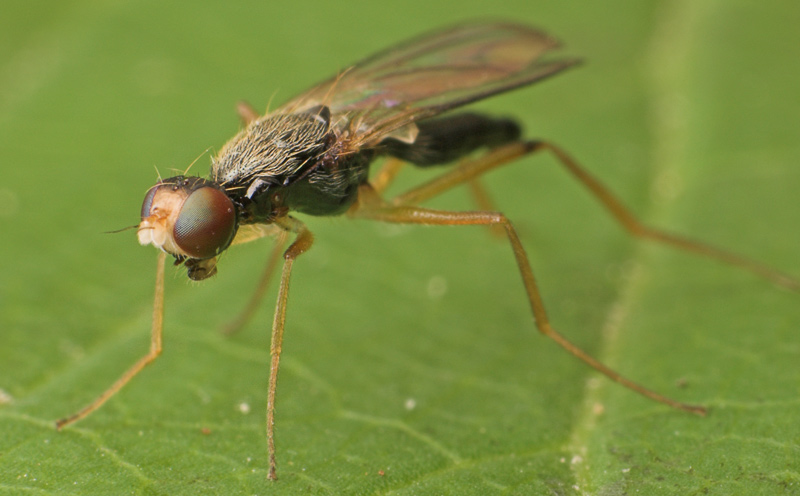 [108.91Kb] Edited by Dmitry Gavryushin on 14-08-2007 06:28 |
|
|
|
| Dmitry Gavryushin |
Posted on 26-06-2007 09:20
|
|
Member Location: Moscow region, Russia Posts: 3338 Joined: 17.10.05 |
Another view + wing.
Dmitry Gavryushin attached the following image: 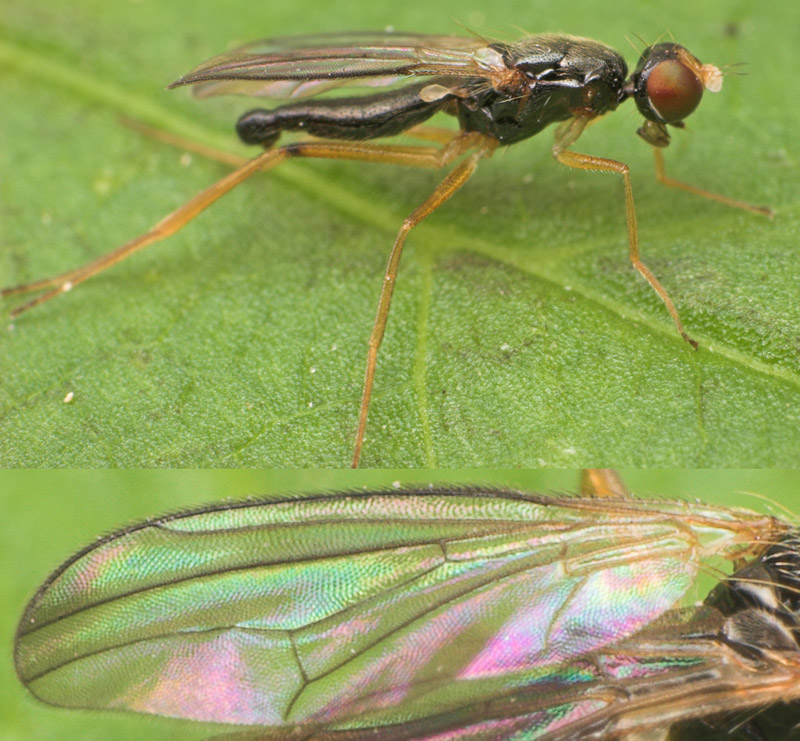 [173.61Kb] |
|
|
|
| Dmitry Gavryushin |
Posted on 26-06-2007 09:20
|
|
Member Location: Moscow region, Russia Posts: 3338 Joined: 17.10.05 |
The head.
Dmitry Gavryushin attached the following image: 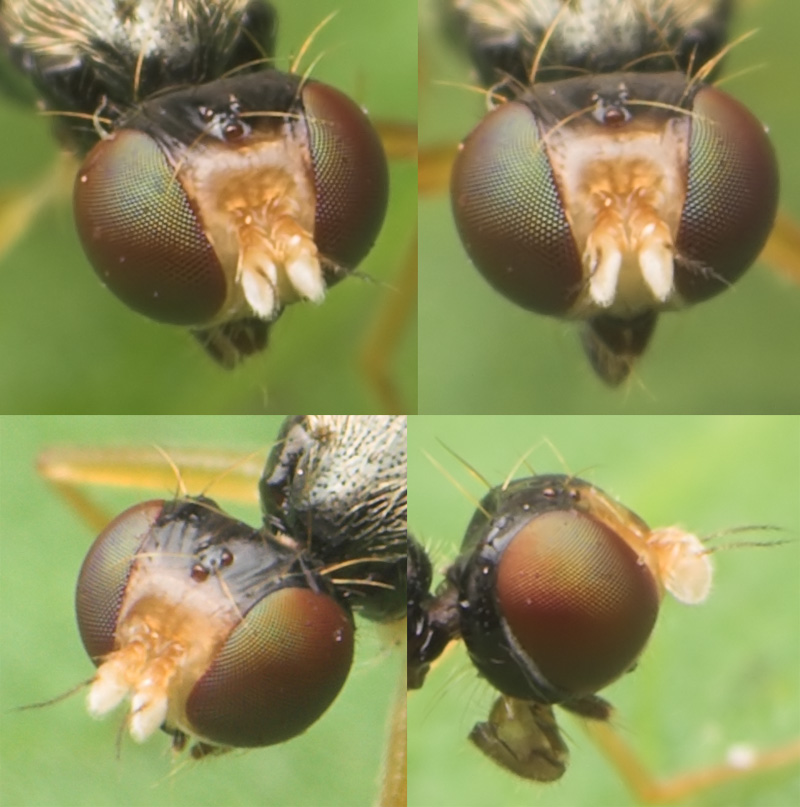 [152.95Kb] |
|
|
|
| Iain MacGowan |
Posted on 26-06-2007 09:55
|
|
Member Location: Perth, Scotland Posts: 462 Joined: 25.11.04 |
Hi Black Yes this is a Stongylophthalmyid - the little family with a big name. there are only 2 Palearctic species S.ustulata which I think thisa is, and the rarer S. pictipes which I have only taken specimens from Finland and Russian Karelia, from memory it has darker setae on the thorax and a more pronounced apical cloud on the wing than ustulata. Both species are part of the saproxylic Diptera fauna associated with old aspens ........... Iain Iain MacGowan |
|
|
|
| Dmitry Gavryushin |
Posted on 26-06-2007 10:05
|
|
Member Location: Moscow region, Russia Posts: 3338 Joined: 17.10.05 |
Many thanks Iain - I spent quite a lot of time on it trying to find a match among Psilidae... |
|
|
|
| Kahis |
Posted on 26-06-2007 12:09
|
|
Member Location: Helsinki, Finland Posts: 1999 Joined: 02.09.04 |
The two species are illustrated here: http://www.elisan...a/strongy/ I have collected S. pictipes a few times, always on the trunk of a recently fallen large aspen. The flies look and behave like clusiids; males run rather slowly around and flash their wings to flies of similar size. On a suitable tree males can be numerous. S. ustulata is definitely not an aspen-only species. It is locally common in humid, rich forests, especially along forest streams (exactly as you describe). Unlike S. pictipes, I have never found this species on aspen trunks. I've often caught it on the leaves of Prunus padus. Edited by Kahis on 26-06-2007 17:52 Kahis |
| Dmitry Gavryushin |
Posted on 26-06-2007 16:20
|
|
Member Location: Moscow region, Russia Posts: 3338 Joined: 17.10.05 |
Thanks a lot for the link and sharing your observations with us Jere. |
|
|
|
| Nikita Vikhrev |
Posted on 30-06-2007 09:29
|
|
Member Location: Moscow, Russia Posts: 9511 Joined: 24.05.05 |
I also found this fly in Mosc reg, 2 copulated pairs was observed on leaves of Tilia cordata near old pond. Sorry, only bad image 
Nikita Vikhrev attached the following image: 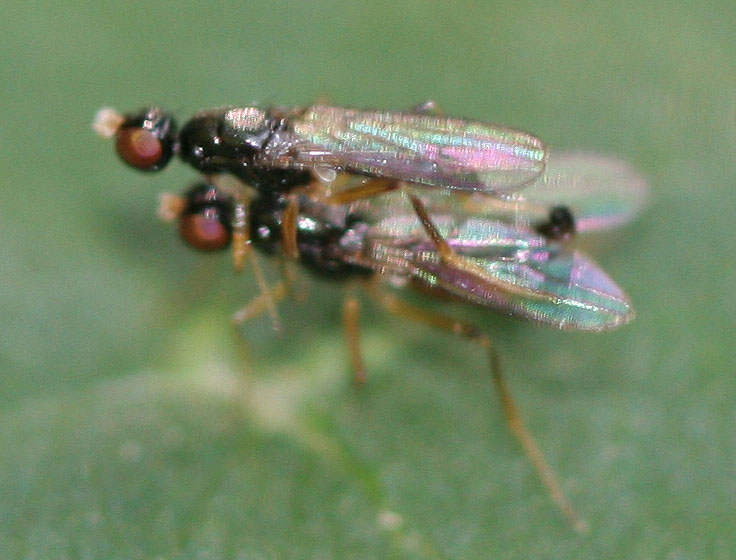 [89.84Kb] Nikita Vikhrev - Zool Museum of Moscow University |
|
|
|
| Dmitry Gavryushin |
Posted on 06-07-2007 13:29
|
|
Member Location: Moscow region, Russia Posts: 3338 Joined: 17.10.05 |
Yesterday I've found another male (4 mm) at basically the same location (on the other side of the railroad). Got some pictures good enough fot the Gallery  . . |
|
|
|
| Dmitry Gavryushin |
Posted on 22-07-2007 21:29
|
|
Member Location: Moscow region, Russia Posts: 3338 Joined: 17.10.05 |
Today I was lucky enough to find a location with lots of these. It was around 5 p.m. at Ozhigovo station, I found a big aspen (around 50 cm in diameter) that once broke at the height of ca. 6 m and fell on the ground. There were dozens of S. ustulata, mostly females, and they were laying eggs (I think a couple is visible in the left picture). It was not only bark of the trunk but also big branches. Some performed specific movements, slowly turning left or right, like screwing the bark.
Dmitry Gavryushin attached the following image:  [152.38Kb] Edited by Dmitry Gavryushin on 22-07-2007 21:32 |
|
|
|
| Dmitry Gavryushin |
Posted on 22-07-2007 21:33
|
|
Member Location: Moscow region, Russia Posts: 3338 Joined: 17.10.05 |
I think that one might be a S. pictipes.
Dmitry Gavryushin attached the following image: 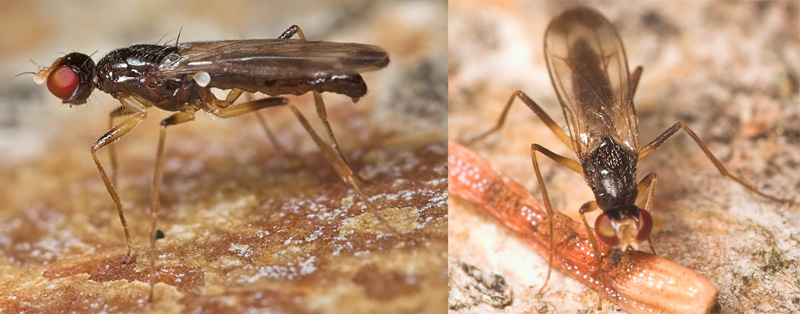 [101.27Kb] |
|
|
|
| jorgemotalmeida |
Posted on 22-07-2007 23:59
|
|
Member Location: Viseu - PORTUGAL Posts: 9296 Joined: 05.06.06 |
awesome photos!!! this fly is such a beauty! I hope to find them near aspen...as well.  |
| Dmitry Gavryushin |
Posted on 14-08-2007 05:53
|
|
Member Location: Moscow region, Russia Posts: 3338 Joined: 17.10.05 |
August 11 and 12, other fallen aspens, but they are still here. Some illustrations of their egg-laying habits. I just wonder what makes them compete with each other for a certain patch of bark with square metres of same bark around? Probably some specific conditions (humidity, temperature, presence of some fungi or eggs laid by other females)...
Dmitry Gavryushin attached the following image: 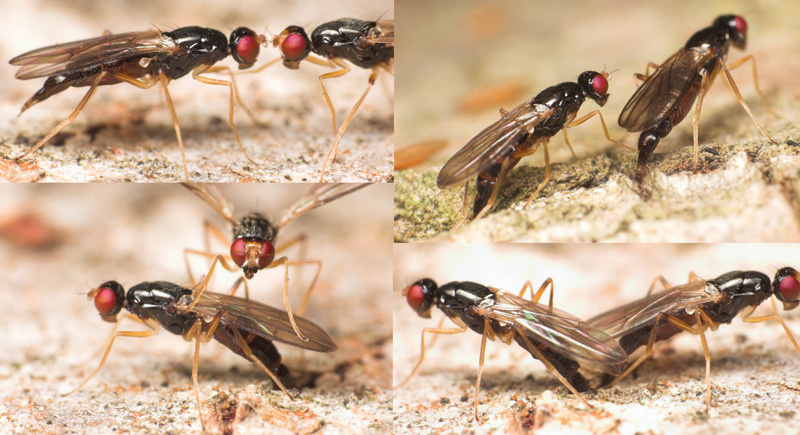 [155.86Kb] |
|
|
|
| Nikita Vikhrev |
Posted on 14-08-2007 08:10
|
|
Member Location: Moscow, Russia Posts: 9511 Joined: 24.05.05 |
Good job!
Nikita Vikhrev - Zool Museum of Moscow University |
|
|
|
| Jump to Forum: |













